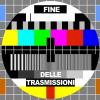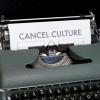Dear Senator Clinton,
I know that it is still weeks before your confirmation hearings, but I write you in the hope that you might redress a grievance that I have with Condoleezza Rice.
Last April I sent the State Department a check for $75 along with an application to renew my passport. Now, I don’t know whether it was in conjunction with the national security overhaul that began in September of 2001, or whether it was a red-meat concession to a demographic bloc on which the Republican Party depends for votes, but when I received my renewal last May, I realized that sometime between 1998 and 2008 the State Department had redesigned the familiar U.S. passport. It is my hope that your department can swiftly revert to the old, Madeleine Albright-era design, and can issue me a fresh passport before I have to show this appalling Condoleezza Rice-era edition to any foreigners.
In the old design, the inside of the front cover of the passport was devoted to identifying the passport bearer; it contained a photo of the bearer, along with the bearer’s name, date of birth, place of birth, and so on. Facing this, on page one of the old passport, appeared a grammatically dubious prayer:
The Secretary of State of the United States of America hereby requests all whom it may concern to permit the citizen/national of the United States named herein to pass without delay or hindrance and in case of need to give all lawful aid and protection.
This prayer still appears, verbatim, on page one of the redesigned passport. However, on the inside of the redesigned passport’s front cover, where the bearer’s identification information should be, there is instead a patriotic collage. The collage consists of (i) a facsimile of a handwritten draft of the lyrics of “The Star Spangled Banner”; (ii) a gray-scale reproduction of a painting of Francis Scott Key watching the British bombardment of Fort McHenry; and (iii) a rippling, tricolor American flag.
In the Albright-era edition, the actual pages of the passport—the pages where foreign officials could place their visa stamps—were plain blue. The pages were faintly patterned with the seals of the fifty states, a pattern no darker than the watermark of a corporate stock certificate. In the Rice-era passport, the pages do not have background patterns. They have background tableaus.
It’s like the difference between “standard” checks and “personalized” checks. Thus, in the new passport, pages 14 and 15 have a photo of Mount Rushmore. Pages 16 and 17 have an image of a steamboat plying a hill-country river. Pages 22 and 23 show a vista of a locomotive crossing a hill-country trestle. Pages 26 and 27 show Lady Liberty and a detail of her tablet. Sunset photos occur with particular frequency, possibly because sunsets are well suited to the new passport’s palette of smoggy pink and hazy blue, hence: Arizona Cactuses at Sunset (pp. 4-5), Colorado Ridge at Sunset (6-7), and Sunset in Hawaii (28).
These photos would seem to present a logistical problem. Unless a foreign border official has recently been issued a fresh pad of ink, he is unlikely to be able to place a legible stamp on top of these photos. In fact, some of the art in the new passport is so intricate that a foreign border official might hesitate to stamp over it at all. Because, aside from mere photos, some pages of this passport contain photo montages. These include, to name just a few:
The Liberty Montage (Liberty Bell, Liberty Hall, Declaration of Independence)
The Alaska Montage (grizzly, salmon, totem pole)
The Texas Montage (cowboys, longhorn, Aermotor windmill)
Formerly, a passport was merely a document designed to assist Americans in traveling abroad. Now it is a document designed to remind Americans to see the homeland first. And, should any Americans ever accidentally go overseas, now they can pass their passports around like travel brochures, to convince the locals in Madagascar and Montenegro to buy a ticket to Kennedy, and catch a cab to Ground Zero, and spend hard currency at Century 21.
Do not misunderstand me. I admire many of the things this passport depicts. For example, I wish that more trans-Atlantic travel did take place on Yankee Clippers, as opposed to on airplanes (cf. The Cape Cod Montage). Or, for example, I wish that more food were produced with the aid of oxen, rather than combustion engines (cf. The Great Plains Montage). I also admire the State Department’s evident desire to create an Album of America—a collection of snapshots that, over the course of the passport’s twenty-eight pages, catalogues the members of our national family. And I am impressed with the diversity the State Department has achieved. Aside from (i) the distant silhouettes of the passengers and crew of the Mississippi Steamer and the Yankee Clipper, (ii) a shadowy herd of cows, and (iii) the identification photograph of the passport holder, the new passport depicts American life in the following numbers:
Geese: 13
Male Humans: 11
Longhorn Cattle: 8 or 9
Bald Eagles: 6
Horses: 3
Totemic Spirits: 3
Bison: 2
Oxen: 2
Seagulls: 1
Grizzlies: 1
Salmon: 1
Female Humans: 1
Of the eleven men, nine are white. The other two are cowboys whose race is rendered indeterminate by their Stetson hats. The lone woman is the Statue of Liberty.
Many of the passport’s photos are accompanied by quotes. For instance, on page 14 there appear these sentences from Daniel Webster:
The principle of free governments adheres to the American soil. It is bedded in it, immoveable as its mountains.
Accompanying Webster’s words is Colorado Ridge At Sunset. In other words, accompanying a quote in which Daniel Webster summons up the image of America’s mountains is … an image of America’s mountains. This is the kind of plain thinking and honest sentiment that makes me proud of my country. Other pairings of quotes and photos are even more revelatory. Above the Texas Montage, with its picture of cowboys and steer, appears a long quote by Lyndon B. Johnson, which concludes:
Is a new world coming? We welcome it—and we will bend it to the hopes of man
Yes! What better emblem than the beef industry for a world ecologically bent to the hopes of American men? Similarly, accompanying the image of a locomotive crossing a hill-country trestle is a quote taken from the inscription on the famous “Golden Spike,” which in 1869 completed America’s first transcontinental railroad:
May God continue the unity of our country as the railroad unites the two great oceans of the world.
Again—yes! In 2008, what better symbol for our national unity than our adamantine national railroad infrastructure?
There is only one pairing of quote and image from which I must dissent. Accompanying the Alaska Montage, with its grizzly and its salmon, is this quote from the “Thanksgiving Address, Mohawk version”:
We send thanks to all the Animal life in the world. They have many things to teach us as people. We are glad they are still here and we hope it will always be so.
I am relieved to hear that the State Department, like the Mohawk nation, aspires to preserve “all the Animal life in the world.” Still, to cite the extirpated grizzly and the decimated salmon as examples of animal species from which humanity ought to learn something? This is dark indeed.
But dark or cheery is beside the point. And whether I agree with the sentiments or not is beside the point. And whether the photos and quotes are impressive or inspiring is beside the point.
It is the presence of these photos at all that is the point. Let me be clear:
Aesthetic commitments are like ideological commitments; they often imply a partisan political preference. And, while holders of elective office are free to express partisan political preferences, holders of unelected civil office are not. The President may declare, “I will not deliver what the liberals demand”; the Postmaster General may not. In issuing passports, the State Department performs a civil service, and thus a passport must be ideologically, and aesthetically, neutral. But the Rice-era passport is not aesthetically neutral. The Rice-era passport expresses, aesthetically, a partisan political preference for the Republican Party, because the Republican Party is the party of scrapbooking.
Let us define scrapbooking as the gathering of eclectic two-dimensional materials, and the arrangement, by wholesome theme, of those materials into book format. Given that definition, it is clear that the Rice-era passport represents an exercise in scrapbooking. Furthermore, let us define the Republican Party as the party of bad taste. Given that definition, it is clear that scrapbookers are a Republican bloc. Seriously, Senator Clinton. Flip through The Encyclopedia of Scrapbooking (Leisure Arts Press, 2005). Ask yourself who these people are voting for.
I feel that, as Americans, both the scrapbookers and I are entitled to passports that are not gussied up to look like the invitation to a fundraiser for the Daughters of the American Revolution. I feel that, as Americans, we are entitled to passports that do not look like the “home décor” aisle of Wal-Mart three weeks before the Fourth of July. I feel that, as Americans, we are entitled to passports that rise above geriatric kitsch.
Finally, I feel we are entitled to passports in which our puny identification photographs are not made to cower beneath a gigantic full-color rendering, on the opposite page, of a bald, bold, and ravenous eagle.
In other words, I would like a passport that looks like the one issued to me back in May of 1998. Also, I would like you to waive the $75 application fee.
Sincerely,
Rudolph Delson
















